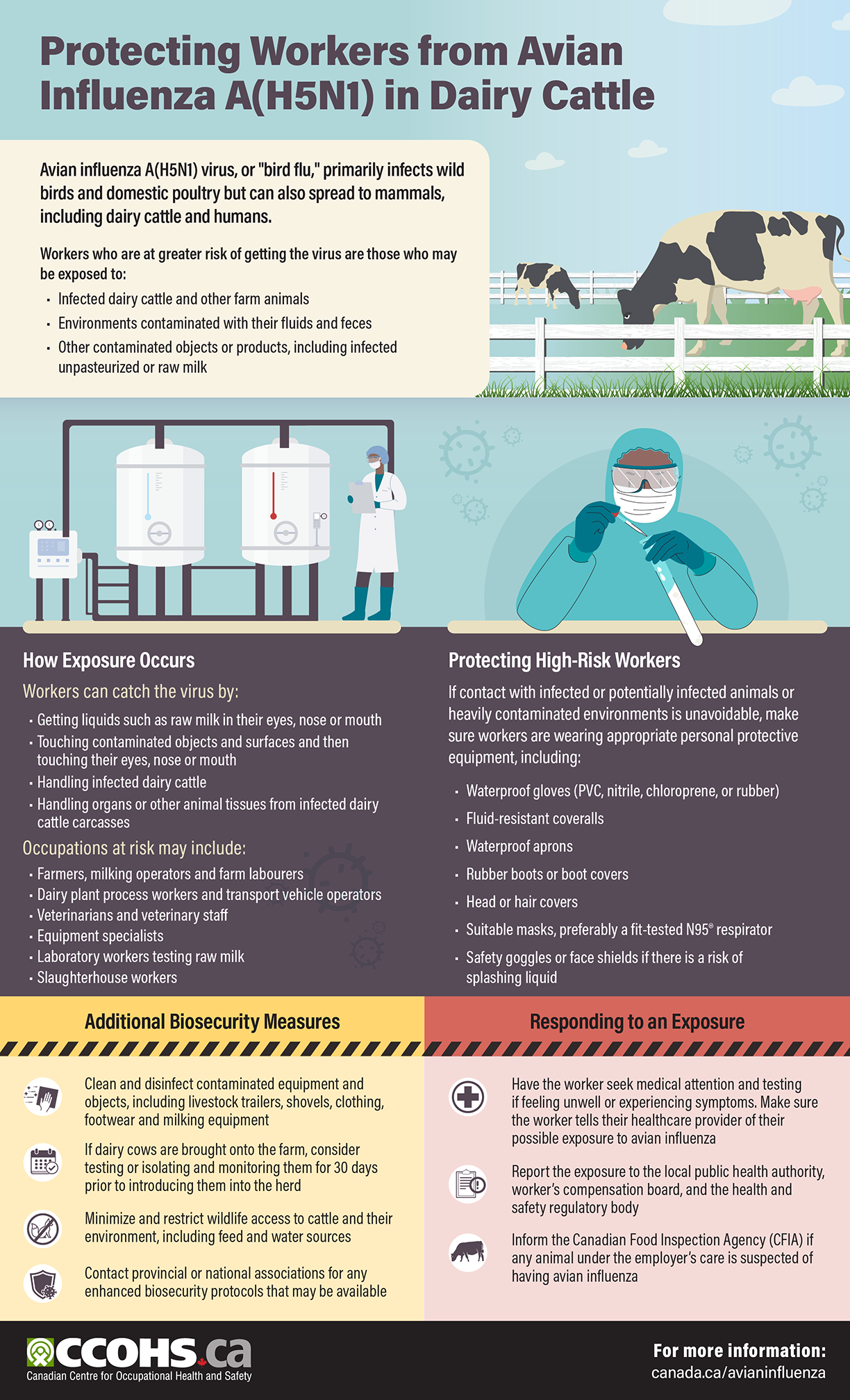Protecting Workers from Avian Influenza A(H5N1) in Dairy Cattle
[PNG, 307 KB]

Description: Protecting Workers from Avian Influenza A(H5N1) in Dairy Cattle
Avian influenza A(H5N1) virus, or "bird flu," primarily infects wild birds and domestic poultry but can also spread to mammals, including dairy cattle and humans.
Workers who are at greater risk of getting the virus are those who may be exposed to:
- Infected dairy cattle and other farm animals
- Environments contaminated with their fluids and feces
- Other contaminated objects or products, including infected unpasteurized or raw milk
How Exposure Occurs
Workers can catch the virus by:
- Getting liquids such as raw milk in their eyes, nose or mouth
- Touching contaminated objects and surfaces and then touching their eyes, nose or mouth
- Handling infected dairy cattle
- Handling organs or other animal tissues from infected dairy
Occupations at risk may include:
- Farmers, milking operators and farm labourers
- Dairy plant process workers and transport vehicle operators
- Veterinarians and veterinary staff
- Equipment specialists
- Laboratory workers testing raw milk
- Slaughterhouse workers
Protecting High-Risk Workers
If contact with infected or potentially infected animals or heavily contaminated environments is unavoidable, make sure workers are wearing appropriate personal protective equipment, including:
- Waterproof gloves (PVC, nitrile, chloroprene, or rubber)
- Fluid-resistant coveralls
- Waterproof aprons
- Rubber boots or boot covers
- Head or hair covers
- Suitable masks, preferably a fit-tested N95® respirator
- Safety goggles or face shields if there is a risk of splashing liquid
Additional Biosecurity Measures
- Clean and disinfect contaminated equipment and objects, including livestock trailers, shovels, clothing, footwear, and milking equipment
- If dairy cows are brought onto the farm, consider testing or isolating and monitoring them for 30 days prior to introducing them into the herd
- Minimize and restrict wildlife access to cattle and their environment, including feed and water sources
- Contact provincial or national associations for any enhanced biosecurity protocols that may be available
Responding to an Exposure
- Have the worker seek medical attention and testing if feeling unwell or experiencing symptoms. Make sure the worker tells their healthcare provider of their possible exposure to avian influenza
- Report the exposure to the local public health authority, worker’s compensation board, and the health and safety regulatory body
- Inform the Canadian Food Inspection Agency (CFIA) if any animal under the employer’s care is suspected of having avian influenza
More information: canada.ca/avianinfluenza
Document last updated on: 2024-09-23

